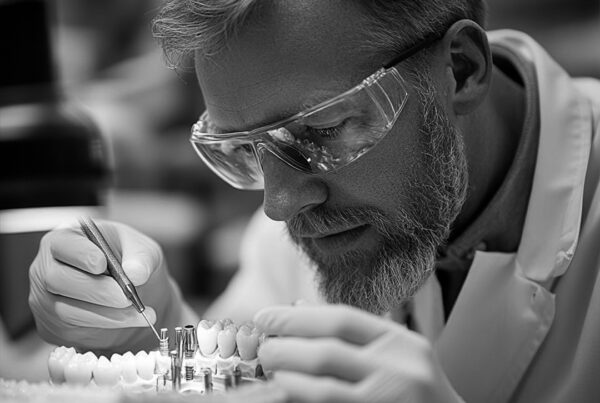
Lamina Emax veneers are thin, lightweight porcelain veneers with high aesthetic properties used in aesthetic dentistry. Usually bonded to the front surface of the teeth, these veneers are preferred to improve the color, shape and overall appearance of the teeth. Emax is particularly known for its natural appearance and high durability; therefore, it is often recommended for patients with aesthetic expectations.
The lamina veneer procedure begins with the dentist assessing the patient’s tooth structure. In the first stage, special techniques are used to measure your teeth and then a minimal etching is performed on the surface of the teeth. This abrasion is necessary for the veneer to adapt to the teeth. Next, veneers made of Emax material are manufactured in a laboratory environment. In the final stage, the veneers are placed on the teeth using special adhesives.
The biggest advantage of Lamina Emax veneers is that they offer the closest aesthetics to the appearance of natural teeth. Thanks to their ability to transmit light, they blend in perfectly with natural teeth. It is also an effective solution for correcting the appearance of weak or damaged teeth, lightening the color of teeth and improving smile aesthetics.
Advantages
- Natural Appearance: Emax veneers are very aesthetically pleasing as they blend perfectly with natural teeth.
- High Durability: Emax provides a long-lasting solution by offering high durability; the risk of wear and cracking is low.
- Minimal Abrasion: Minimal abrasion of the teeth is required during the veneering process, which preserves the natural structure of the teeth.
- Lightweight Structure: Lamina veneers are thin and light, so they do not cause any discomfort to the teeth.
- Biocompatibility: Emax material is well tolerated by the body; the risk of allergic reactions is low.
- Easy Maintenance: Emax veneers need to be cared for like normal teeth and can be long-lasting with regular brushing and flossing.
Disadvantages
- Cost: Emax veneers can often be more costly than other types of veneers.
- Treatment Time: The veneers can take several sessions, which can be time-consuming for some patients.
- Limited Application: Lamina veneers are usually used on front teeth; they may not be suitable for back teeth.
- Risk of Cracking: Overly vigorous chewing movements or hard foods can cause the veneers to crack.
- Tooth Sensitivity: Some patients may experience temporary tooth sensitivity after the procedure.
10 Frequently Asked Questions
- What are Lamina Emax veneers?
- Lamina Emax veneers are thin, porcelain veneers with high aesthetic properties used to improve the aesthetics of teeth.
- How long does the veneer procedure take?
- The procedure usually takes 2-3 sessions; the first session is for measurement and preparation, and the next session is for the application of the veneers.
- How durable are Emax veneers?
- Emax veneers can last 10-15 years or more with proper care.
- Is the veneer procedure painful?
- Since local anesthesia is used during the procedure, there is usually no pain; however, some patients may feel a slight discomfort after the procedure.
- Who are lamina veneers suitable for?
- It is suitable for anyone who has aesthetic or discoloration problems with their teeth.
- What should be the care after veneers?
- Regular brushing, flossing and dental check-ups should be observed.
- Do veneers change color?
- Emax veneers do not change color like normal teeth; however, they will last longer with good oral hygiene.
- Do veneers cause allergies?
- Since Emax is a biocompatible material, the risk of allergies is low.
- What are the veneer costs?
- Emax veneer costs vary according to the number of teeth to be applied and the treatment.
- What should be the condition of the teeth during veneering?
- It is important that the teeth are healthy and free of decay or infection; otherwise the treatment process may vary.
















